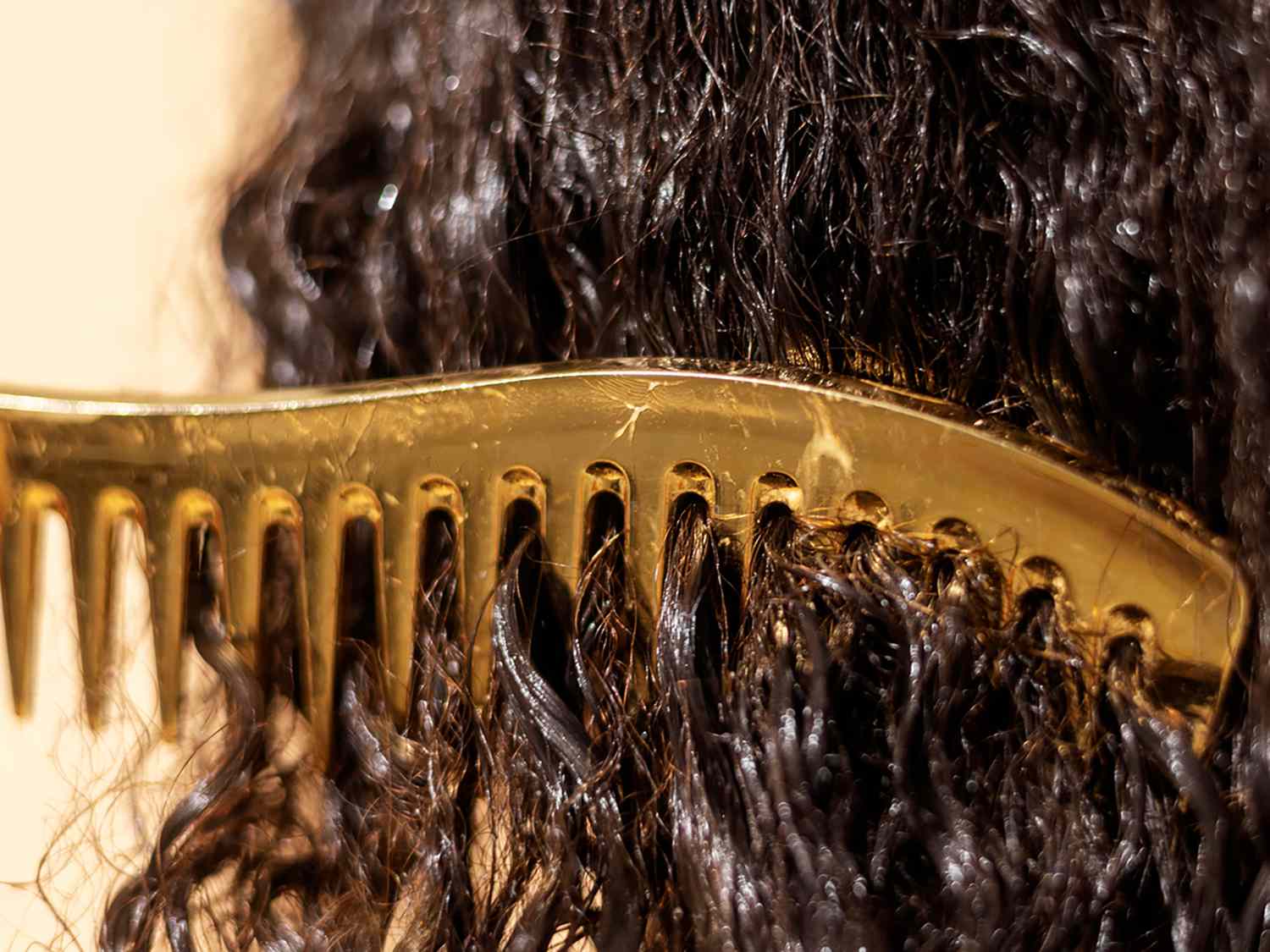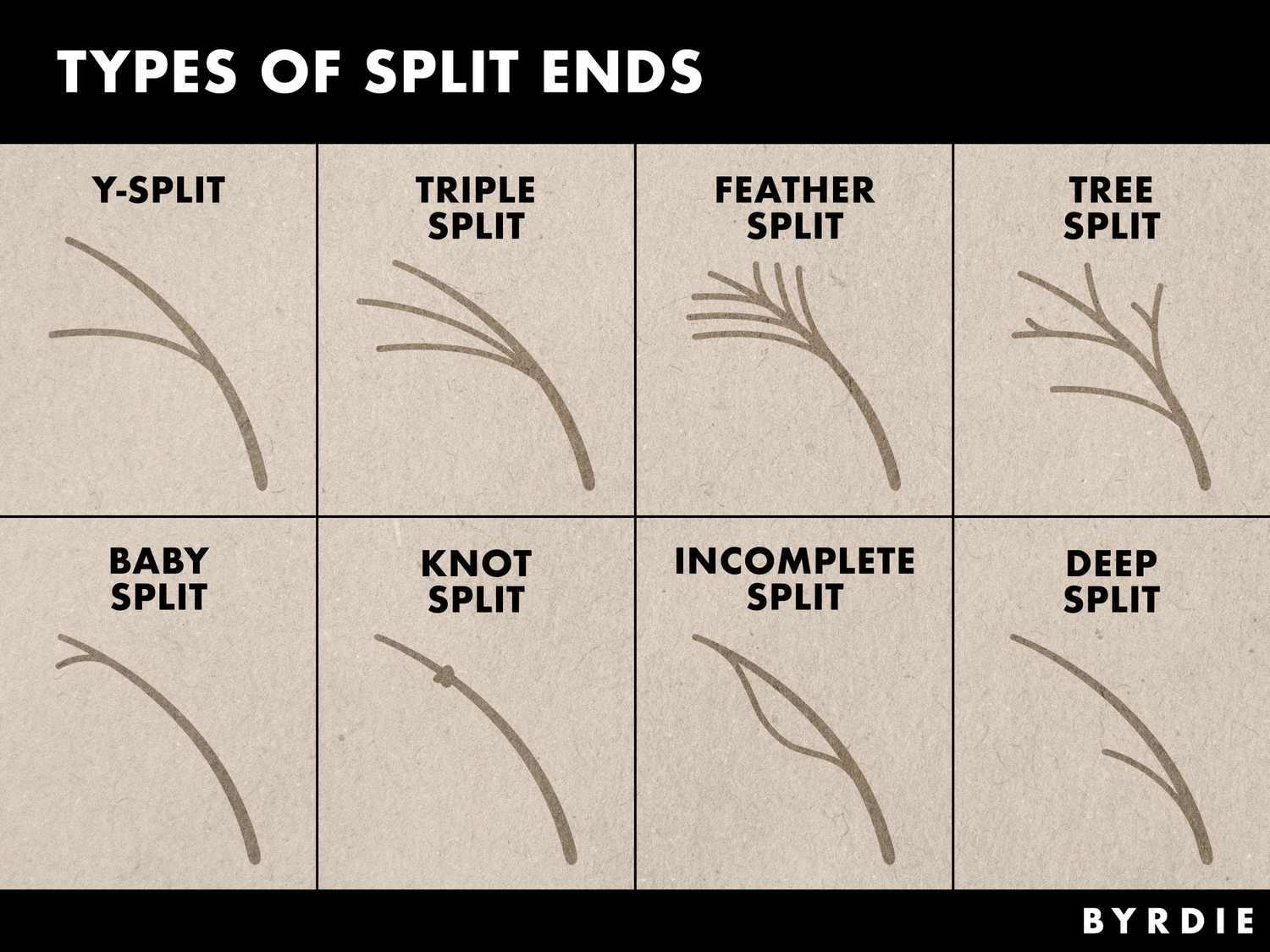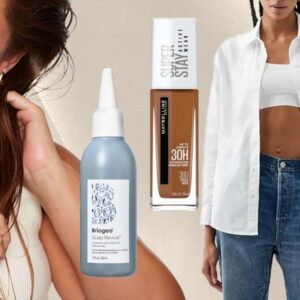
Artem Podrez / Stocksy
In This Article
What They Are Types and Identification Causes Preventing Them Split End Treatment Options The Final Takeaway
Bad beauty confession: Once upon a shorter-haired time, I would hunt for—and unravel—split ends, splitting them apart like string cheese. But, as a beauty writer, I must emphatically remind you all that this is very bad for the hair and absolutely not the protocol for dealing with hair damage. Please, do as I say and not as I did. I am but a mere human.
So, how should you actually deal with split ends? And what causes them in the first place? I confessed my guilty pleasure to four hair care experts, all of whom were relieved to learn I'd given up the habit and provided me with a first-rate education of all things split ends. Read on for everything you need to know about split ends, from what causes them to how to prevent them altogether.
Meet the Expert
- Adam Federico is a hairstylist and vice president of technical education for R+Co.
- Serina Battaglini is a hairstylist specializing in balayage and blonde colors. She is the owner of Serina Styles Studio in Sola Salons.
- Franck Izquierdo is a celebrity hairstylist and co-founder of IGK Hair Care.
- Iris Rubin, MD, is a board-certified dermatologist and founder of SEEN Skin & Hair Care.
What Are Split Ends?
A split end occurs when a smaller piece of the hair shaft breaks away (or splinters off) from the rest of the strand. From a more scientific lens, split ends result from damage to the hair’s protective outer layer (the cuticle), causing the strand to split into two or more fragments, celebrity hairstylist Franck Izquierdo explains. Hairstylist Adam Frederico says you can think of split ends as splinters in the hair.
Split ends result from mechanical, chemical, or temporal damage to the hair that causes the fibers to fray at any given point along the strand. And while they tend to occur on the ends—after all, the ends are the oldest part of the hair, which makes them particularly fragile and prone to damage, board-certified dermatologist Iris Rubin, MD, explains—they're by no means limited to those last few inches. Split ends can be tricky because they can continue to split upward if we're not careful and vigilant, Federico warns.
What Do Split Ends Look Like? Types and Identification

Byrdie
Split ends vary in appearance and severity, the most basic form being a traditional Y split. According to Izquierdo, identifying split-end types can help you better understand the extent of your hair damage, allowing you to tailor your haircare routine accordingly. Hairstylist Serina Battaglini says there are eight major types of split ends:
- Y-split: The Y split is your typical split end, found at the very end of the hair strand. Hair is split into two, resembling an upside-down Y shape.
- Triple split: Fairly self-explanatory, the triple split occurs when two fibers, one on either side of the shaft, break away from the strand, creating a three-way split.
- Feather split: A feather split features multiple cascading splits along one side of the hair strand, similar to the pattern of a feather. This can also include one or two split ends on the other side of the hair shaft, but most split ends occur on one side.
- Tree split: In the tree split, several split ends cascade up the hair strand on both sides, resembling a tree with branches sticking out.
- Baby split: Baby splits are proportionally smaller than traditional Y-split ends and indicate the early development of a split end.
- Knot split: A knot split features a small white or hair-colored ball on the hair shaft resembling a knot of sorts. When lightly tugged at, the knot will break off (along with the hair below it). Once removed, this can potentially result in a baby split end.
- Incomplete split: An incomplete split occurs when the hair begins to split within the strand rather than at the ends, creating a hole in the strand before the split has fully broken through to the end of the hair.
- Deep split: The deep split is exactly what it sounds like—a split that runs deep up the length of the hair shaft.
Causes
Everything from environmental stress, mechanical actions like brushing and styling, and chemical treatments to sleeping on wet hair, weakened old strands, and even simply allowing your hair to blow and tangle in the wind can cause split ends, Izquierdo explains.
And while causes vary widely, they all tend to have one thing in common: a loss of hydration. According to Federico, dehydrated strands are at risk of forming split ends. So, if you take moisture out of the hair but don't add an ample amount back in, you risk developing split ends.
The hair shaft is largely made up of keratin—a protein insoluble in water—which protects the hair and is surrounded by an oil gland that provides hair with natural lubrication. The outermost layer of the hair shaft is called the cuticle, which is formed by overlapping dead hair cells. The cuticle generally protects the hair from the elements (whatever they may be). But when the cuticle wears away and that moisture and lubrication is lost, the inner part of the hair is exposed—which, in turn, can cause it to unravel. This process eventually leads the hair to split from itself.
Since countless factors can lead to the development of split ends, it can be hard to link a type of damage to a specific type of split end. But it doesn't particularly matter: Damage of any kind is likely to cause split ends, and more of it, regardless of how the damage occurs, can worsen the splitting.
Preventing Them
On a lighter note, Rubin says preventing split ends is easier than you might think—and prevention is key here since split ends cannot be mended once they occur. While some products may claim to mend split ends, any visible improvements are temporary at best.
At the most basic level, using conditioner every time you wash hair and using heat protectants before any styling is a great place to start. It’s important to remember that hair is most fragile when wet, so Federico suggests applying leave-in product post-wash and brushing through your hair with a wide-tooth comb. Take your time working through any knots or snags and be gentle—all experts suggest avoiding traditional brushes on wet hair, though those made for wet hair, like a Tangle Teezer, are okay, Battaglini says.
According to Izquierdo, any solid preventative hair care routine should include regular trims with your hairstylist.
Split End Treatment Options
While there are numerous treatment options for split ends, the best professional treatment option is to get regular trims or ‘dustings,’ in which your stylist focuses not on removing length but on getting rid of any damaged hair tips. “Trimming not only gets rid of split ends but also prevents the split from traveling up the hair shaft, which can lead to more significant damage,” Izquierdo explains.
For those who aren’t keen on big haircuts or have split ends higher up along the hair shaft, Battaglini suggests looking into a technique called ‘surface cutting,’ where the stylist goes through the hair in thin sections, isolating split ends to trim them off piece by piece.
The Final Takeaway
While a solid preventative haircare routine will help mitigate split ends, they're more or less inevitable—after all, even a particularly gusty breeze can cause split ends. To minimize damage, be gentle with wet hair, use heat sparingly (and apply a heat protector when you do), hydrate and nurture your ends, and schedule frequent trims. And don't panic if you find a split end or two. Federico says it best: "If you see a split end, consider it a messenger. Your hair needs moisture. And schedule a trim."
Article Sources Byrdie takes every opportunity to use high-quality sources, including peer-reviewed studies, to support the facts within our articles. Read our editorial guidelines to learn more about how we keep our content accurate, reliable and trustworthy.
-
Yang FC, Zhang Y, Rheinstädter MC. The structure of people’s hair. PeerJ. 2014;2:e619.


